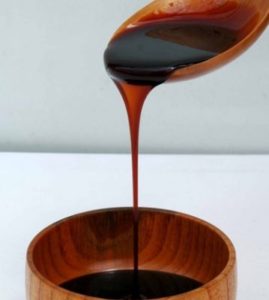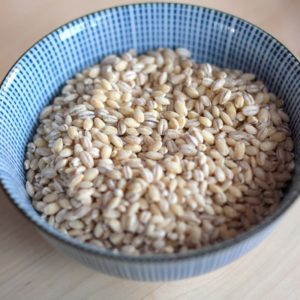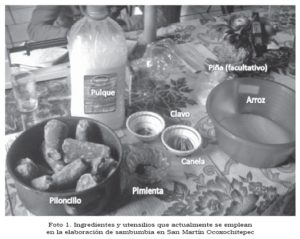CUBAN POPULAR PHRASES: IN THE NATIONAL ARGOT .. “IT TASTES LIKE SAMBUMBIA”.
In 1763 when the Captain of the Island the Count of Ricla took possession of his appointment, one of his measures established with priority was to taxed in ‘two pesos’ on each barrel of brandy distilled in the mills and of ‘a real’ on the barrel of the drink called “sambumbia”, of extraordinary consumption among the people in those times.
This comment on the “sambumbia” has generated interest in some readers and we can add that it is even written on the terrazzo floor of a store that is located in the famous corner of Monte and Cienfuegos in Habana.
WHAT IS SAMBUMBIA?
It is a refreshing drink that in Cuba is prepared with honey of cane and water, probably originating from Africa. When pepper is added it is called “frucanga” according to the Provincial Dictionary of Cuban Voices “by Esteban Pichardo, published in 1849.
SAMBUMBIA:
Drink made of cane honey and water; Is added ají guaguau. (See Frucanga)
FRUCANGA:
Synonym of zambumbia, with the difference that is usually added ají guaguau.
The term also refers to those drinks or badly prepared meals, which look unpleasant or very watery without its original flavor. This fermented drink, which has been consumed since the 18th century, is still part of the traditional Mexican gastronomy. There it is made up of different ingredients, which can include corn, barley, pineapple peel, apple, orange, guava and others.
In Cuba Sambumbia, or sambumbia water is called the fermented drink, prepared with water, molasses of cane and chili, but I also find that in some texts they refer to the addition of an ear of dry, burnt corn.
And for example a widespread use in the national jargon “this cafe is very clear, it taste like sambumbia”.
Don Fernando Ortiz, in the cookbook “Gusta Você” edited in 1956, referring to the term sambumbia tells us that … “in Cuba the term was extended to any drink that was too watery, unpleasant or bad taste …”.
Cirilo Villaverde attributes the word to Africans and is based on the main root of the phoneme “mbi” which in Bantu means “evil”, “abominable”, etc., which coincides with what Ortiz expressed in referring to it finished. And although Villaverde already considers the term mambí as a very honorable title, he cites that the phoneme “mbi” also forms the Mambi voice, a word that in the Antilles, at the time, was also very contemptuous.
Today there are few references to the consumption and preparation of sambumbia (zambumbia), in Mexico there are data that record their consumption since the colonial period.
A transcript made from a manuscript attributed to Antonio de Pineda (1753-1795), contains the explanation of how to make 77 alcoholic drinks that were taken in New Spain in the eighteenth century. Regarding the sambumbia says:
“Roasted barley and grilled (crudely ground), water is poured and in four or five days fermented and sweetened with honey or panocha.
If all the varied recipes on this drink are curious and interesting, it was to find that its consumption by the slaves, at least by the so-called black muzzles, was in those deplorable times of slavery a symptom of being considered a “sin.”
FRASES POPULARES CUBANAS: EN EL ARGOT (DICHO) NACIONAL .. “SABE A SAMBUMBIA”.
En 1763 cuando toma posesión de su cargo el Capitán de la Isla de Cuba el Conde de Ricla, una de sus medidas establecidas con prioridad fueron el fue el taxar en dos pesos sobre cada barril de aguardiente que se destilaba en los ingenios y de un real sobre el barril de la bebida llamada “sambumbia”, de extraordinario consumo entre el pueblo en aquellos tiempos.
Este comentario sobre la “sambumbia” ha generado interés en algunos lectores e incluso lo podemos ver escrito en el suelo de terrazo de un comercio que se encuentra en la famosa esquina de Monte y Cienfuegos de la Habana.
QUE ES LA SAMBUMBIA?
Es una bebida refrescante que en Cuba se prepara con miel de caña y agua, probablemente originaria de África. Cuando se le agrega ají picante recibe la denominación de “frucanga” segun el diccionario Provincial de Voces Cubanas” de Esteban Pichardo, publicado en 1849.
SAMBUMBIA:
Bebida hecha de miel de caña y agua; se le agrega ají guaguau. (véase Frucanga)
FRUCANGA:
Sinónimo de zambumbia, con la diferencia que suele agregársele ají guaguau.
El término también hace referencia a aquellas bebidas o comidas mal preparadas, cuyo aspecto es desagradable o muy aguada sin su sabor original. Esta bebida fermentada, que se consume desde el siglo XVIII, aún forma parte de la gastronomía tradicional mexicana. Allí se compone con distintos ingredientes, que pueden incluir el maíz, la cebada, la cáscara de piña, la manzana, la naranja, la guayaba y otros.
En Cuba Sambumbia, o agua de sambumbia se le llama a la bebida fermentada, preparada con agua, melado de caña y ají, pero también encuentro que en algunos textos refieren que se le adicionaba una mazorca de maíz seco y quemado.
Y por ejemplo un uso generalizado en el argot nacional ” este cafe está muy claro, sabe a sambumbia”.
Don Fernando Ortiz, en el libro de cocina “Gusta Usted” editado en 1956, refiriéndose al término sambumbia nos dice que… ”en Cuba se extendió el vocablo a toda bebida muy aguada, de poco agrado o mal gusto…”.
Cirilo Villaverde le atribuye el vocablo a los africanos y lo fundamenta por ser su raíz principal el fonema “mbi” que en bantú significa “malo”, “abominable”, etc., lo que coincide con lo expresado por Ortiz al hacer referencias a dicho término. Y aunque Villaverde ya considera el término mambí como un título muy honroso, cita que el fonema “mbi” también forma la voz mambí, una palabra que en las Antillas, en su momento, también fue muy despectivo.
Hoy en día son escasas las referencias en torno al consumo y preparación de la sambumbia (zambumbia), en México existen datos que registran su consumo desde la época de la colonia.
Una transcripción que se hiciera de un manuscrito atribuido a Antonio de Pineda (1753-1795), contiene la explicación de cómo elaborar 77 bebidas alcohólicas que se tomaban en la Nueva España en el siglo XVIII. Respecto a la sambumbia dice:
“Tostada la cebada y majada (molida groseramente), se echa agua y en término de cuatro o cinco días fermenta y la endulzan con miel o panocha.
Si todas las variadas recetas sobre esta bebida resultan curiosas e interesantes fue encontrar que su consumo por los esclavos, al menos por los llamados negros bozales, fuera en aquellos tiempos deplorables de la esclavitud un síntoma de ser considerado como un “pecado”.
Agencies/MemoriasCubanas/Derubín Jácome/Extractos/Internet Photos/Arnoldo Varona/TheCubanHistory.com
THE CUBAN HISTORY , HOLLYWOOD.










